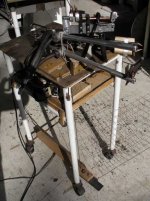Jeremy Harris
100 MW
I'd go for a capacitor with a genuine capacity of around 2F, the only thing to watch is that some car audio capacitors have a real value of capacitance that is less than the claimed value. It's pretty easy to check the value by charging the capacitor up to a known voltage and then discharging it in to a big resistor of known value. You can time how long it takes to discharge and calculate the true capacitance easily enough.
As to whether or not a CD welder will weld A123 cells then the answer is yes, as that's how the Killacycle A123 battery packs are welded up. There's a video on YouTube showing this, somewhere.
Jeremy
As to whether or not a CD welder will weld A123 cells then the answer is yes, as that's how the Killacycle A123 battery packs are welded up. There's a video on YouTube showing this, somewhere.
Jeremy


